Introduction
In the rapidly evolving landscape of technology, the integration of DevOps Infrastructure Management Services has emerged as a pivotal strategy for organizations seeking to enhance their operational efficiency and responsiveness. By bridging the gap between software development and IT operations, DevOps fosters a culture of collaboration that not only accelerates deployment cycles but also aligns closely with overarching business objectives.
With a notable 6.8% of companies adopting these practices hailing from India, the global trend towards DevOps is unmistakable. However, the journey is not without its challenges; cultural resistance remains a significant barrier for nearly half of DevOps leaders.
This article delves into the core components, essential tools, and future trends of DevOps, while also addressing the obstacles organizations face in their implementation efforts. Through a comprehensive exploration of these elements, it becomes clear that embracing DevOps is not merely a technical shift, but a transformative approach that positions companies for sustained growth and innovation in an increasingly competitive market.
Understanding DevOps Infrastructure Management Services
DevOps infrastructure management services represent a strategic approach designed to integrate software development (Dev) and operations (Ops), fostering an environment that promotes shorter development cycles and increased deployment frequency. This methodology aligns closely with business objectives, effectively enhancing an organization's capacity to deliver applications and services at high velocity. A staggering 6.8% of companies adopting software development and operations practices originate from India, reflecting a significant global presence and an increasing trend towards these methodologies.
The average age of an employed development and operations engineer is 39 years old, indicating a mature workforce that brings a wealth of experience to the field. However, it’s important to note that 45% of technology operations leaders cite cultural resistance as a primary barrier to implementation. Organizations can overcome this challenge by:
- Fostering a culture of collaboration and open communication
- Providing training to bridge knowledge gaps
- Actively involving all stakeholders in the transition process
By facilitating collaboration between development and operations teams, this approach enhances communication, streamlines problem resolution, and ultimately drives business growth and innovation amid competitive pressures. Real-world examples, such as CloudZero, illustrate how effective cloud cost management can lead to substantial savings; companies like Drift have reported annual savings in the millions through the use of such solutions. These savings not only enhance efficiency but also enable firms to strategically distribute resources, react quickly to market demands, and improve overall business strategy, highlighting the crucial role of collaborative practices in contemporary IT operations.
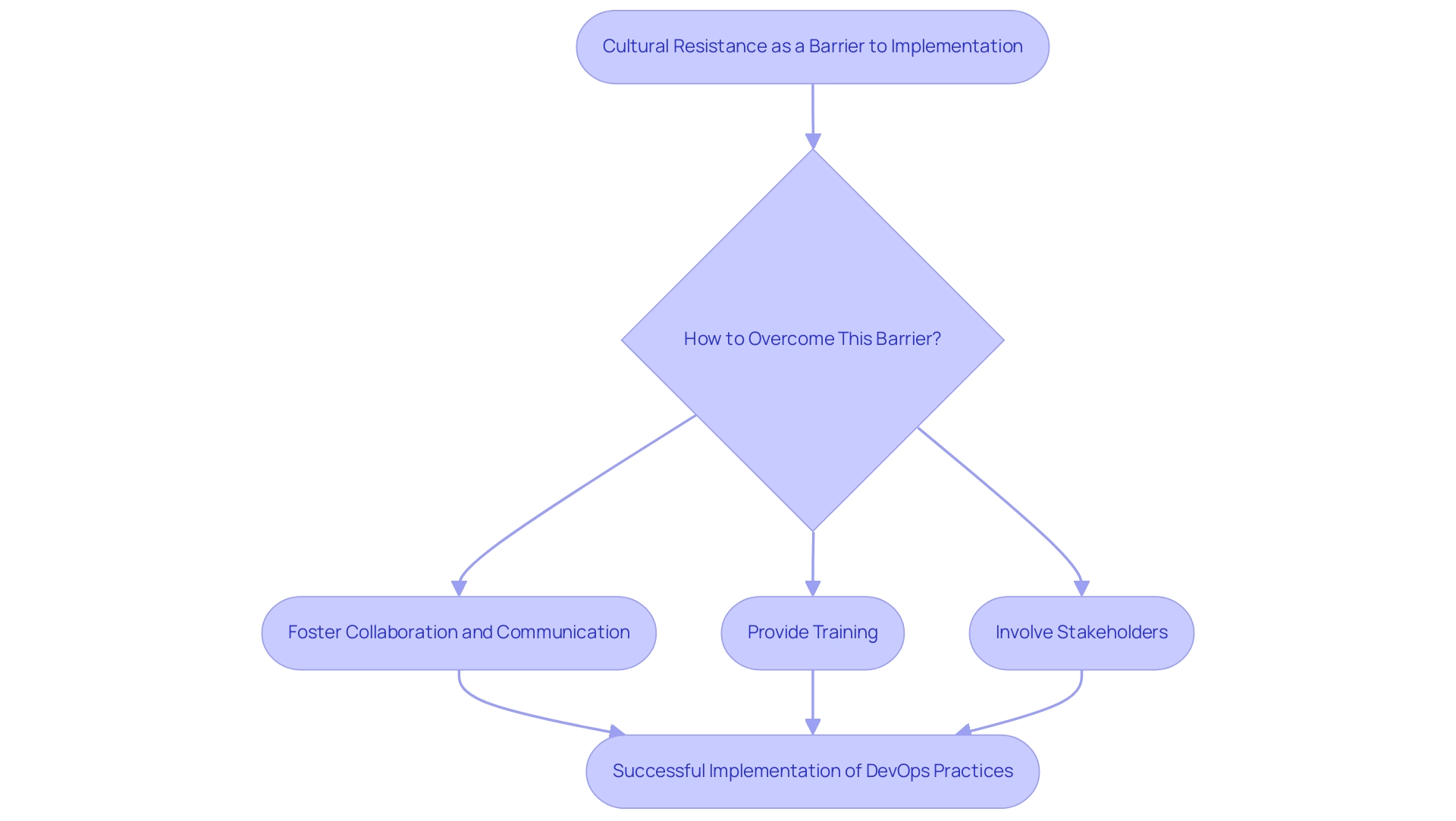
Key Components and Benefits of DevOps Infrastructure Management
The core elements of development and operations infrastructure management services encompass:
- Continuous Integration/Continuous Deployment (CI/CD)
- Infrastructure as Code (IAC)
- Automated testing
Together, these components serve to optimize workflows and significantly decrease the duration of software delivery. The advantages of implementing these practices are extensive: they foster enhanced collaboration across teams, increase deployment frequency, lower change failure rates, and expedite time to market.
Significantly, studies show that high-achieving technology teams deploying multiple times daily encounter a 7% lower change failure rate in comparison to those conducting monthly releases. According to a study by Google, this improvement highlights the operational efficiency gained through effective CI/CD practices. Furthermore, making the CI/CD pipeline the only deployment method is crucial, as it prevents issues from bypassing automated quality assurance stages.
Additionally, organizations that adopt these development and operations methodologies frequently report heightened customer satisfaction, attributed to the rapid and dependable delivery of software updates and new features. However, it is important to acknowledge that legacy systems and infrastructure present significant challenges for 29% of leaders in operational development, highlighting the need for effective practices. By prioritizing these key components, organizations can effectively utilize devops infrastructure management services to leverage the full potential of their IT operations, driving success in an increasingly competitive landscape.
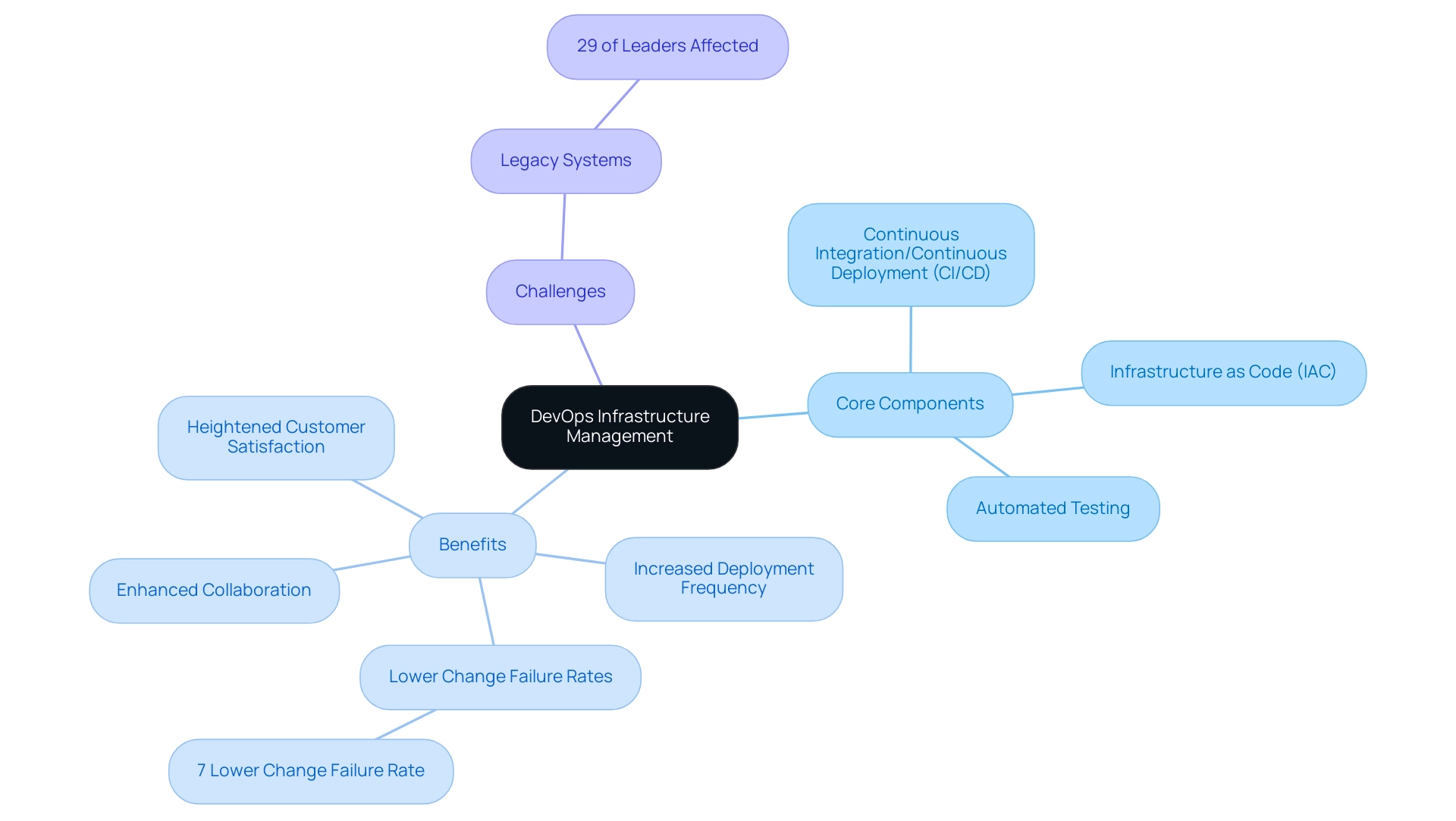
Essential Tools and Technologies for Effective DevOps Management
To maneuver through the intricacies of contemporary IT operations, organizations depend on crucial tools that improve operational efficiency. Jenkins stands out as a pivotal Continuous Integration/Continuous Deployment (CI/CD) tool, streamlining the development pipeline and facilitating rapid delivery cycles. Docker complements this by providing a robust solution for containerization, enabling applications to be packaged along with their dependencies, thus ensuring consistency across various environments.
Kubernetes, utilized by more than 50% of Fortune 100 enterprises, excels in orchestration, providing automation, scalability, and resilience within cloud-native workflows. This combination not only improves resource management but also empowers teams to respond swiftly to changing demands.
In recent times, job listings related to development and operations have surged, with a 75% increase on Indeed and a 50% rise on LinkedIn, highlighting the growing demand for these skills in the industry. Furthermore, effective monitoring is crucial in maintaining system performance and reliability. Tools such as Prometheus and Grafana equip teams with the necessary insights to proactively identify and address potential issues, thus enhancing overall operational efficiency.
The integration of these tools into a cohesive devops infrastructure management services strategy is not merely beneficial; it is imperative for ensuring the seamless delivery of applications and maximizing return on investment in technology. As one specialist remarked, "the future appears quite promising for the industry, and a growing number of entities assert that it has made a beneficial difference for their establishment thus far." Furthermore, a case study on access request fulfillment delays showed that 50% of companies take hours to weeks to fulfill access requests due to inadequate infrastructure access oversight.
By incorporating access management into development and operations workflows, companies can accelerate access and guarantee security. As the development and operations landscape continues to evolve, leveraging these essential tools will undoubtedly be key to achieving sustained success.
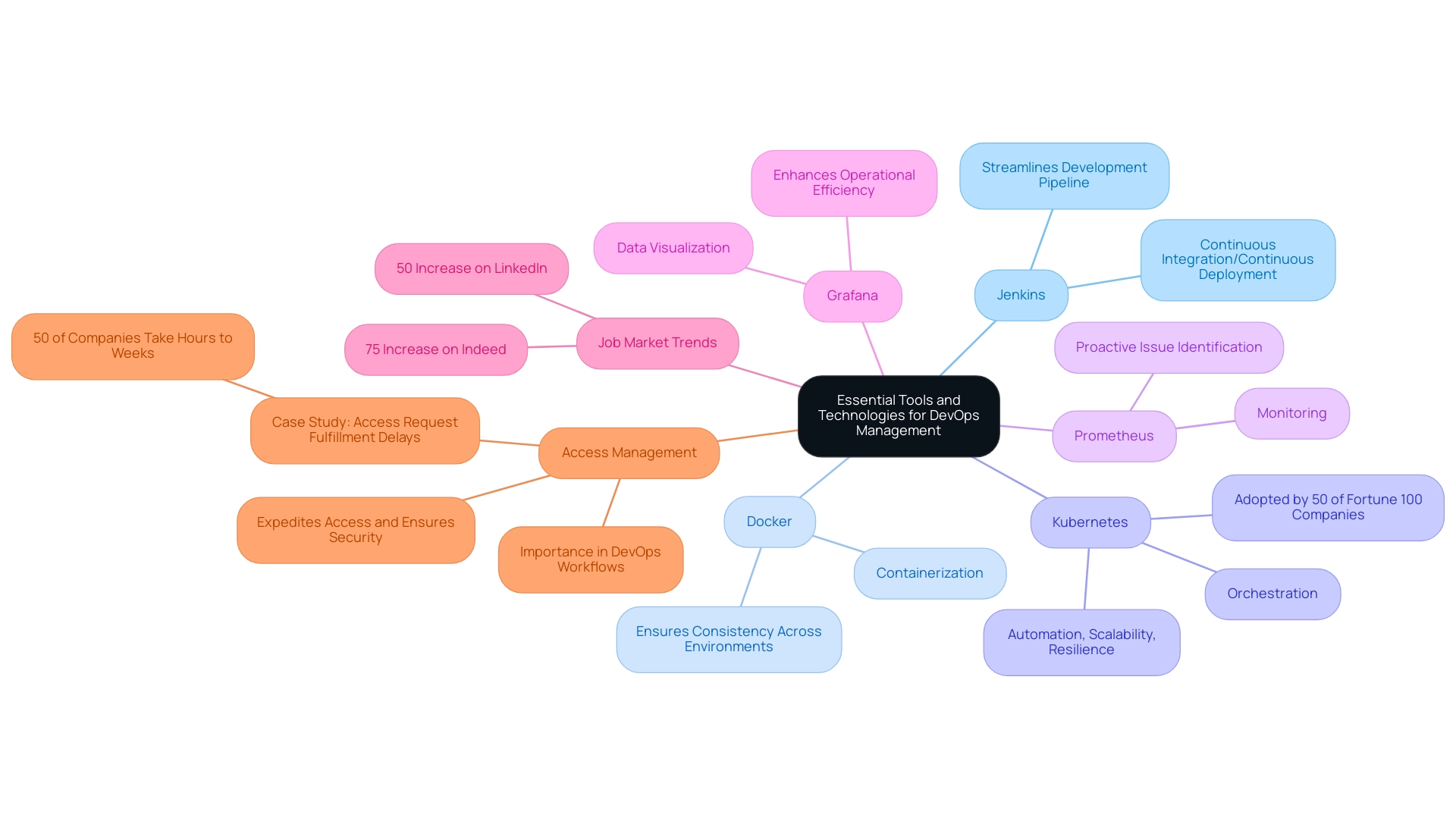
Challenges and Considerations in Implementing DevOps Infrastructure Management
Implementing devops infrastructure management services poses several significant challenges that organizations must navigate to achieve success. One of the foremost hurdles is cultural resistance, which can impede collaboration between development and operations teams—an essential element of a successful development and operations framework. Recent statistics indicate a pressing demand for skilled professionals in operations and development, with job postings for specialists surging by 75% on Indeed and 50% on LinkedIn.
This surge emphasizes the pressing requirement for companies to invest in training programs designed to prepare their teams with the essential skills and resources for efficient practices. According to industry experts, 'the future looks very bright for the development and operations sector,' with many organizations acknowledging its positive impact to date. Moreover, businesses such as Drift have shown the financial advantages of efficient software development and operations practices, saving $2.4 million each year on AWS expenses through CloudZero's services.
To address these challenges, organizations should prioritize robust change management strategies that enhance their devops infrastructure management services and foster a culture of collaboration and continuous improvement. This can include:
- Implementing structured training initiatives that not only enhance technical skills but also address the cultural aspects that often act as barriers to adopting modern development practices.
- The adoption of Kubernetes by over 50% of Fortune 100 companies exemplifies a successful application of development and operations principles and showcases its significance in the industry.
Case studies have indicated that organizations that actively participate in addressing cultural resistance through targeted strategies experience smoother transitions and greater overall success in their initiatives.
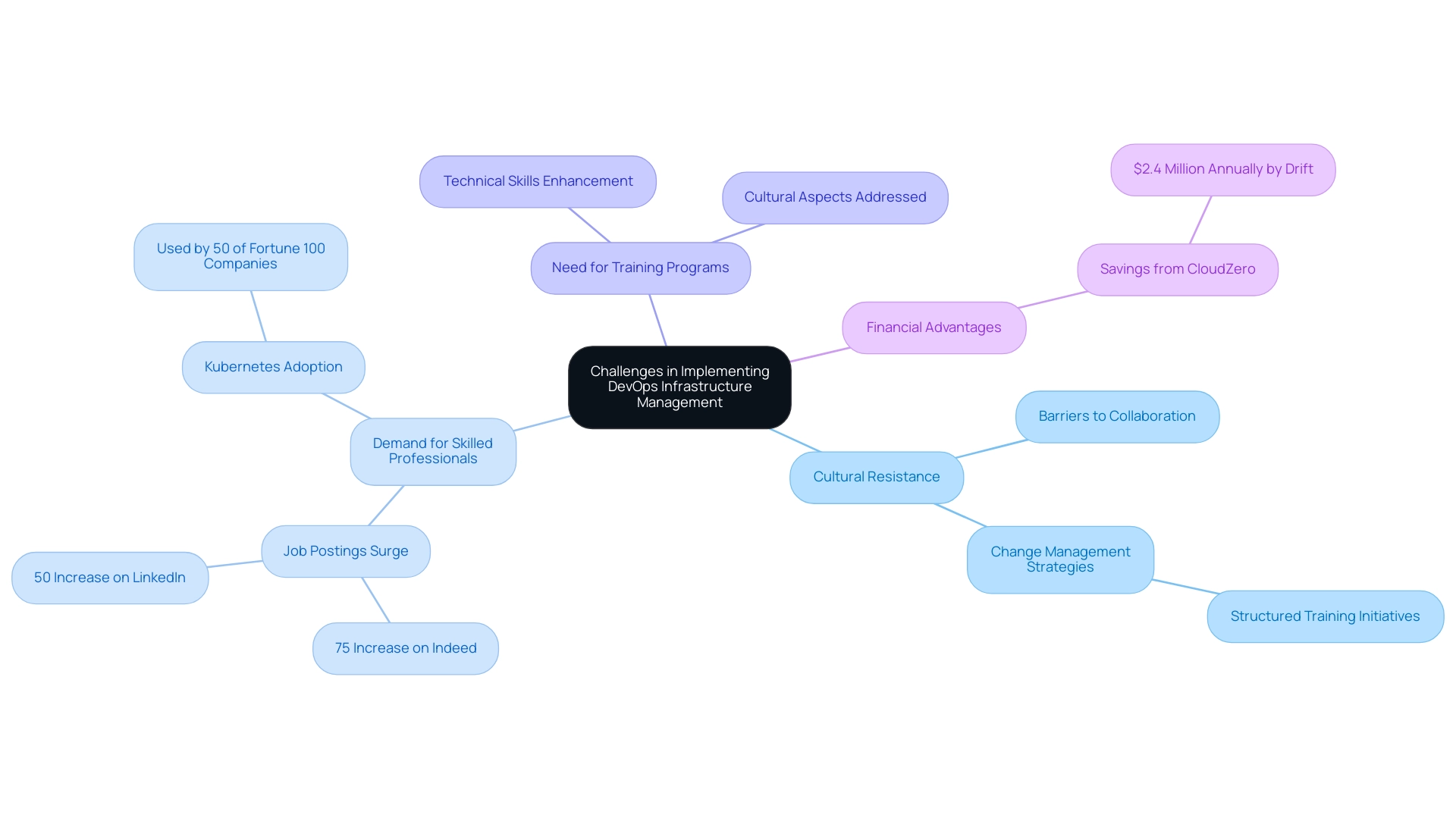
Future Trends in DevOps Infrastructure Management Services
Future trends in devops infrastructure management services are set to focus on increased automation, along with the incorporation of artificial intelligence (AI) and machine learning (ML) for predictive analytics. Research indicates that the services market for devops infrastructure management services in the Middle East and Africa is projected to expand at a compound annual growth rate (CAGR) of 14.2% from 2023 to 2030, underscoring the escalating demand for innovative solutions. A key initiative propelling this growth is cloud expense oversight, as many entities are still employing various unintegrated tools, resulting in inefficiencies.
As such, the adoption of streamlined solutions becomes essential for optimizing operational costs. Security practices are expected to evolve significantly, with the adoption of DevSecOps becoming increasingly critical to safeguarding cloud-native applications. As organizations adopt these modern architectures, the necessity for scalable and flexible devops infrastructure management services will intensify.
The rise of remote work further catalyzes this evolution, compelling teams to implement collaborative tools and practices that facilitate seamless communication across geographically dispersed teams. For instance, Drift reported saving $2.4 million annually on AWS costs by using CloudZero, highlighting the real-world impact of effective cost management strategies. Cody Slingerland aptly notes,
DevOps specialists work across departments and teams,
emphasizing the essential collaborative ethos that underpins successful DevOps initiatives.
Staying informed about these trends is crucial for organizations seeking to harness technology to drive business success effectively.
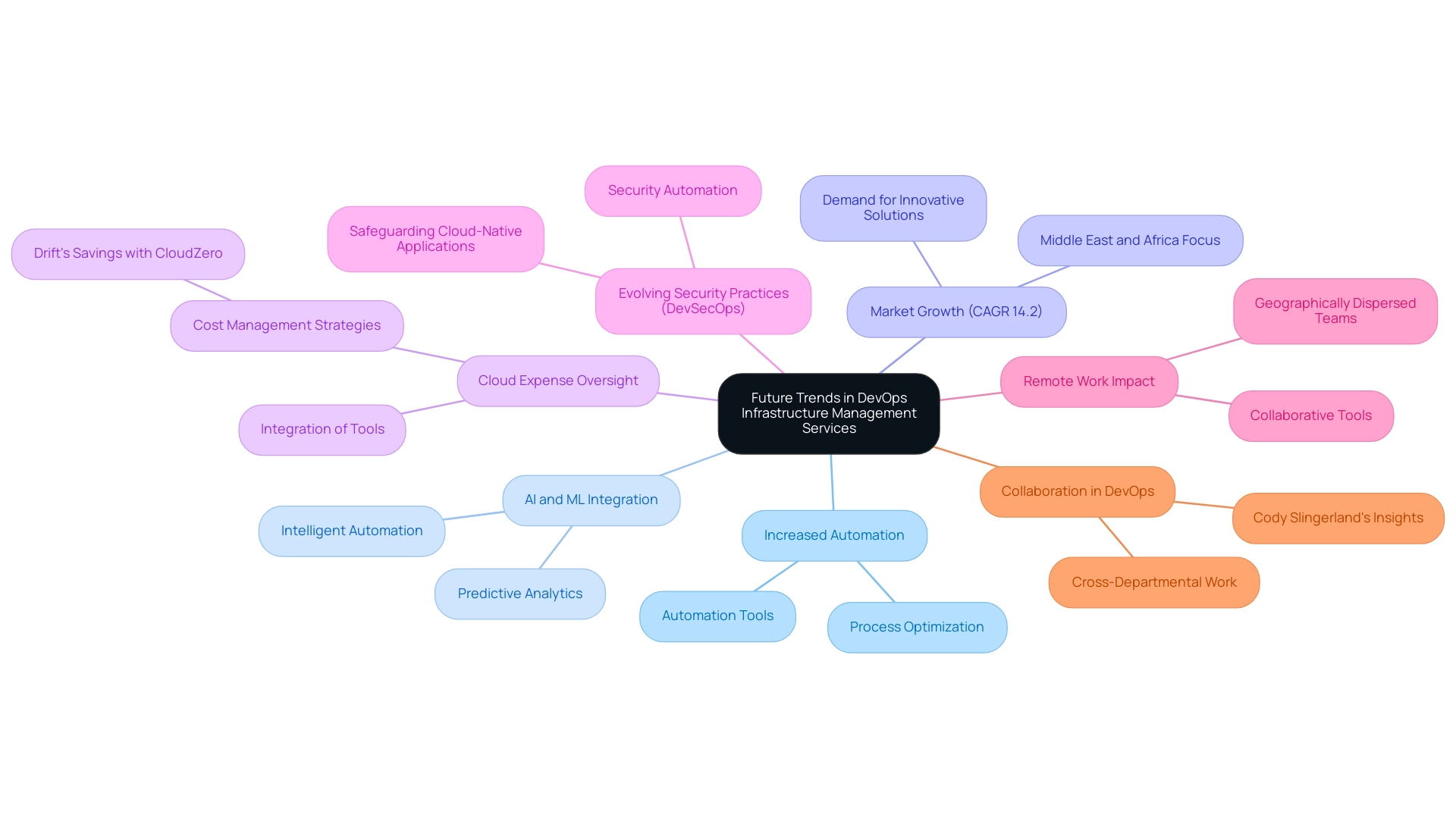
Conclusion
Embracing DevOps Infrastructure Management Services is increasingly recognized as a vital strategy for organizations aiming to enhance their operational effectiveness and agility. By integrating development and operations, companies can significantly reduce deployment cycles and improve responsiveness to market demands. The key components, such as Continuous Integration/Continuous Deployment (CI/CD) and Infrastructure as Code (IaC), not only streamline workflows but also foster a culture of collaboration that is essential for driving innovation.
Despite the challenges posed by cultural resistance and legacy systems, the successful implementation of DevOps practices can yield substantial benefits, including improved customer satisfaction and reduced change failure rates. The growing demand for skilled professionals in this field further underscores the importance of investing in training and development to equip teams for success.
As organizations continue to adapt to the evolving technological landscape, the future of DevOps appears promising, with trends pointing towards greater automation and the integration of AI and machine learning. By staying ahead of these trends and leveraging essential tools, companies can position themselves for sustained growth and competitive advantage. Ultimately, the transition to a DevOps-centric approach is not merely a technical upgrade; it represents a transformative shift that empowers organizations to thrive in an increasingly complex marketplace.




